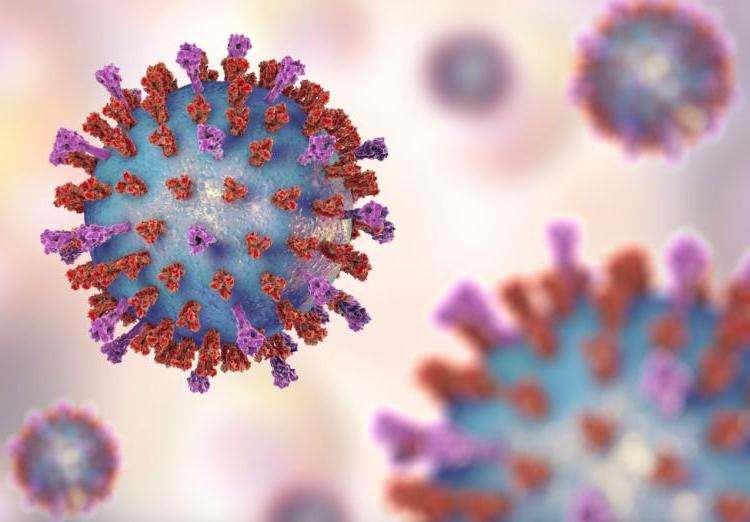
There is not enough evidence to support the claims that severe acute respiratory disease coronavirus 2 (SARS-CoV-2), the causative agent behind the 2019 novel coronavirus disease (COVID-19), is a laboratory construct and purposefully manipulated, a new study suggests.
“It is improbable that SARS-CoV-2 emerged through laboratory manipulation of a related SARS-CoV-like coronavirus,” the authors asserted. [Nat Med 2020;doi:10.1038/s41591-020-0820-9]
Drawing from the published descriptions of the SARS-CoV-2 genome, the authors identified two notable features of the virus. The first is a receptor-binding domain (RBD) located on the SARS-CoV-2 spike protein, which carries a six-amino acid signature that determines its binding affinity. [J Virol 2020;doi: 10.1128/JVI.00127-20]
Based on structural and biochemical studies, this domain makes SARS-CoV-2 optimized to latch on to the ACE2 protein of many different species, including ferrets, cats and humans. [J Virol 2020;doi: 10.1128/JVI.00127-20; bioRxiv 2020;doi: 10.1101/2020.02.19.956581; Science 2020;doi: 10.1126/science.abb2507]
Despite this, however, computational studies have determined that the interaction between the SARS-CoV-2 RBD and the human ACE2 receptor protein remains unideal. Moreover, the amino acid sequence in this particular virus diverges from signatures previously identified to allow optimal binding. [J Virol 2020;doi: 10.1128/JVI.00127-20, J Virol 2008;82:2274-2285]
“Thus, the high-affinity binding of the SARS-CoV-2 spike protein to human ACE2 is most likely the result of natural selection on a human or human-like ACE2 that permits another optimal binding solution to arise,” the authors said. “This is strong evidence that SARS-CoV-2 is not the product of purposeful manipulation.”
The second notable feature of SARS-CoV-2 is a functional polybasic cleavage site, located in the boundary between its two subunits. Though its exact function and implications on transmissibility and pathogenicity remain unknown, this cleavage site does offer additional evidence against claims of purposeful manipulation, the authors noted.
Coronaviruses resembling SARS-CoV exist in cell cultures in biosafety level 2 labs all over the world. However, the likelihood of acquiring such a polybasic cleavage site via culture passage is low.
“New polybasic cleavage sites have been observed only after prolonged passage of low-pathogenicity avian influenza virus in vitro or in vivo,” the authors said. “Furthermore, a hypothetical generation of SARS-CoV-2 by cell culture or animal passage would have required prior isolation of a progenitor virus with very high genetic similarity, which has not been described.” [J Virol 2001;75:4439-4443]
Hypothetically, even if this SARS-CoV-2 had been produced in the lab, it would need to undergo several rounds of passage in cell cultures of animals with ACE2 receptors resembling that of humans. This has not yet been described in the literature, the authors added.
Instead, they postulate that SARS-CoV-2 had come to be through two possible mechanisms: natural selection in animal reservoirs, before zoonosis, or in humans, after zoonotic transfer. It is important to resolve this question to better prepare for similar outbreaks in the future, the authors said.
If, for instance, SARS-CoV-2 had acquired its key mutations after the transfer to humans, then an outbreak event of a similar global scale is unlikely to repeat itself even after several zoonotic transfers. But if the virus had been incubated and mutated inside an animal host, the risk of future re-emergence will remain high.
“Obtaining related viral sequences from animal sources would be the most definitive way of revealing viral origins. The identification of a potential intermediate host of SARS-CoV-2, as well as sequencing of the virus from very early cases, would similarly be highly informative,” the authors said.
“Irrespective of the exact mechanisms by which SARS-CoV-2 originated via natural selection, the ongoing surveillance of pneumonia in humans and other animals is clearly of utmost importance,” they added.
*Angiotensin-converting enzyme 2, the protein identified as the functional receptor for SARS-CoV-2